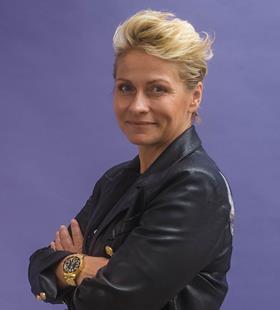M&A has been key for many businesses over the past 12 months, despite the economic squeeze from Covid-19. Insurance Times asks the industry to reveal what deal trends it expects to see in the year ahead
Stephen Ross, head of M&A, Global Risk Partners
The UK broking industry continues to be an attractive sector for investment and this trend will continue. It has shown its resilience during the Covid-19 pandemic and many businesses have seen strong growth over the last year, particularly as the economy has been recovering.

We will see ongoing consolidation, with vendors looking to realise their life’s work, or to secure investment for the next stage of development in their business. We recognise that vendors will only sell their business once and it is a critical decision point for them.
Dealing with future partners that have a clear cultural alignment as well as a track record of deal execution will become increasingly important.
Many vendors are choosing partners that can help them with areas which are the ’grit in the eye’ – being able to access high quality regulatory, compliance, accounting and finance resource functions is crucial as these are areas which are becoming more complex.
When it comes to the acquisition itself, as far as we’re concerned, a key element of any decision-making relates to GRP demonstrating that it is the best future custodian for an acquired business, its customers and its staff.
Ashwin Mistry, executive chairman, Brokerbility
We are in a unique industry. By and large, insurance contracts are renewable annually, providing certainty that the customer will come back and - hopefully - want to renew.
We know exactly what they want to buy, how much they paid last year, whether they are good customers or not and we have 364 days to prepare for that transaction – no other sector has that level of certainty.

Secondly, the industry has unlimited stock. We can call on suppliers at will and almost dictate the price our client is prepared to pay – regulation significantly helps weed out poor practitioners and low capitalised suppliers.
The recent M&A frenzy will continue at pace. High multiples for quality businesses and particular sector specialisms will continue to command a high valuation.
Also, the availability of surplus cash is obvious, coupled with historic low levels of interest and greater certainty on underwriting disciplines adds fuel for those fund managers, hedge funds and venture capitalists that want to invest in this sector.
The rapid rise of technology, thirst for online trading and qualitative data at our fingertips makes insurance and broking a great place to invest for the longer term. It’s very cash generative and the certainty of cash is just too appealing to ignore.
I see these M&A trends continuing well beyond 12 months - greater diversity of business models will prevail as they take full advantage of the ecosystems that allow profitable maximisation of the use of data.
Peter Blanc, group chief executive, Aston Lark
In the broker space, I strongly suspect that we will see continued high levels of M&A activity. Prices have undoubtedly increased and for those brokers struggling with succession planning, or indeed just struggling to grow, now could be a great time to enter a discussion.

Joining forces with a broker like Aston Lark could help in so many ways – access to markets, access to a whole group of helpful colleagues, collaboration and help on marketing and growth initiatives, scale in the market, regulatory and compliance support, as well as providing your clients and staff with a new long-term home.
The funding available to larger brokers is better than ever and transactions can be completed in as little as three months from start to finish.
We will also see further consolidation in the private medical insurance broker landscape, which shares similar dynamics with the general broking sector.
As ever, specialist brokers will be most in demand, as these are seen to be able to help the acquiring broker with ongoing organic growth – which remains the most important aspect of running any broker.
Suffice to say, 2022 will continue to be very exciting.
Sam White, chief executive, Freedom Services Group
It’s fair to say there is going to be even more M&A. It’s a consolidator’s market at the moment, but I do also think the market is going to start to see outside players coming into the insurance sector and wanting to take some of the existing players to bolt them into their ecosystem.

There are new types of products at the moment that actually bring in an insurance element, which will make them more sellable.
So, for instance, car finance. People when they are buying cars want solutions, so you’re seeing things like Cinch come in that are just delivering the car, you can get it online – it is inevitably going to want an insurance proposition to round that off. So, does M&A then become of interest when it has difficulty dealing with standard insurers?
It’s important to understand what is on firms’ radar – what do they want to be involved in and what do they see as looking good?
Matt Connolly, chief executive, Sønr
As the world settles down and companies regroup to focus on their longer-term strategies, innovation will once again take centre stage.
And, as a natural part of this, so will exploration around build versus buy.
Whilst most incumbents already have the ideas, talent, assets, capital and customers, they also tend to be inward looking and have processes and cultures designed for anything but innovation.

Over the coming 12 months we’ll see many more insurance companies look to both open innovation – the partnering with insurtechs – and acquisitions as the key levers to deliver and accelerate innovation.
Our expectation, however, is the opportunity to acquire earlier stage businesses will become more competitive.
We’re seeing a rise in M&A from heavily capitalised scale ups, which are now strengthening their own market position by acquiring well performing, earlier stage startups.
It’s well recognised that incumbents need to respond to the changing market conditions. And that acquisition, whether off the back of a partnership or a direct purchase, will play a critical role.
The big question is whether incumbents will be able to spot the right startup in the first place and be able to get in there before the competition.
Simon Mabb, group managing director, Romero Insurance Brokers
It’s inevitable that we will start seeing more mergers between consolidators as well as smaller, independent brokers being swallowed up and mini consolidators appearing.
With consolidators always on the hunt for new revenue streams that haven’t previously been exploited, they will most likely begin to look at other areas of the value chain that haven’t previously been focused on to deliver more margin.

You can already see this happening with brokers such as Towergate buying loss adjusting firm Thompson and Bryan, along with others swallowing up loss adjusting and risk management businesses.
These upsell services can be easily added on to existing relationships and can potentially increase earnings for each client without the need to invest time and effort in winning new business.
This focus on winning new business hasn’t traditionally been in the DNA of many of these consolidators and the development of new revenue streams within their business models is one of the biggest changes I can see taking place in the market over the coming year.
Daniel Franklin, head of mergers and acquisitions, handl Group
The next 12 months should present a flurry of M&A activity in the insurance industry as companies emerge from the pandemic driven disruption of the last 18 months to pursue new found growth strategies that will provide future financial stability.

I believe there will be a focus from strong corporates, consolidators and private equity on securing strategic acquisitions –particularly in the insurtech space – to meet the digital-first demands of customers and to support hybrid working needs.
I also expect to see corporates that have performed strongly throughout the pandemic become challengers to more established consolidators.
Inversely, some businesses that have weathered the storm of the pandemic, but found the experience of the last 18 months extremely stressful may naturally start to think about exits.
This, compounded with the possible future changes in capital gains tax, will be a key driver behind the sale of established owner managed businesses during the next 12 months.
In addition, opportunistic M&A will be plentiful in the distressed space. The impact of the pandemic, the affordability of pandemic-related government loan schemes and regulation changes may prove too much for some companies, which will create a driving force in the M&A landscape for the next 12 months.
Charles Dixon, deal advisory partner, KPMG UK

We have experienced a huge volume of M&A in the insurance sector, which shows few signs of slowing down over the next 12 months.
We can expect to see continued robust interest from private equity, particularly in distribution, with large amounts of private capital competing for quality assets.
For corporates, M&A remains the quickest way to pivot their business strategy and to address some of the legacy issues that face the sector.
Meanwhile, incumbent insurers will pursue further exits from non-core business lines as they look to deploy capital into new capabilities and technology.













































No comments yet